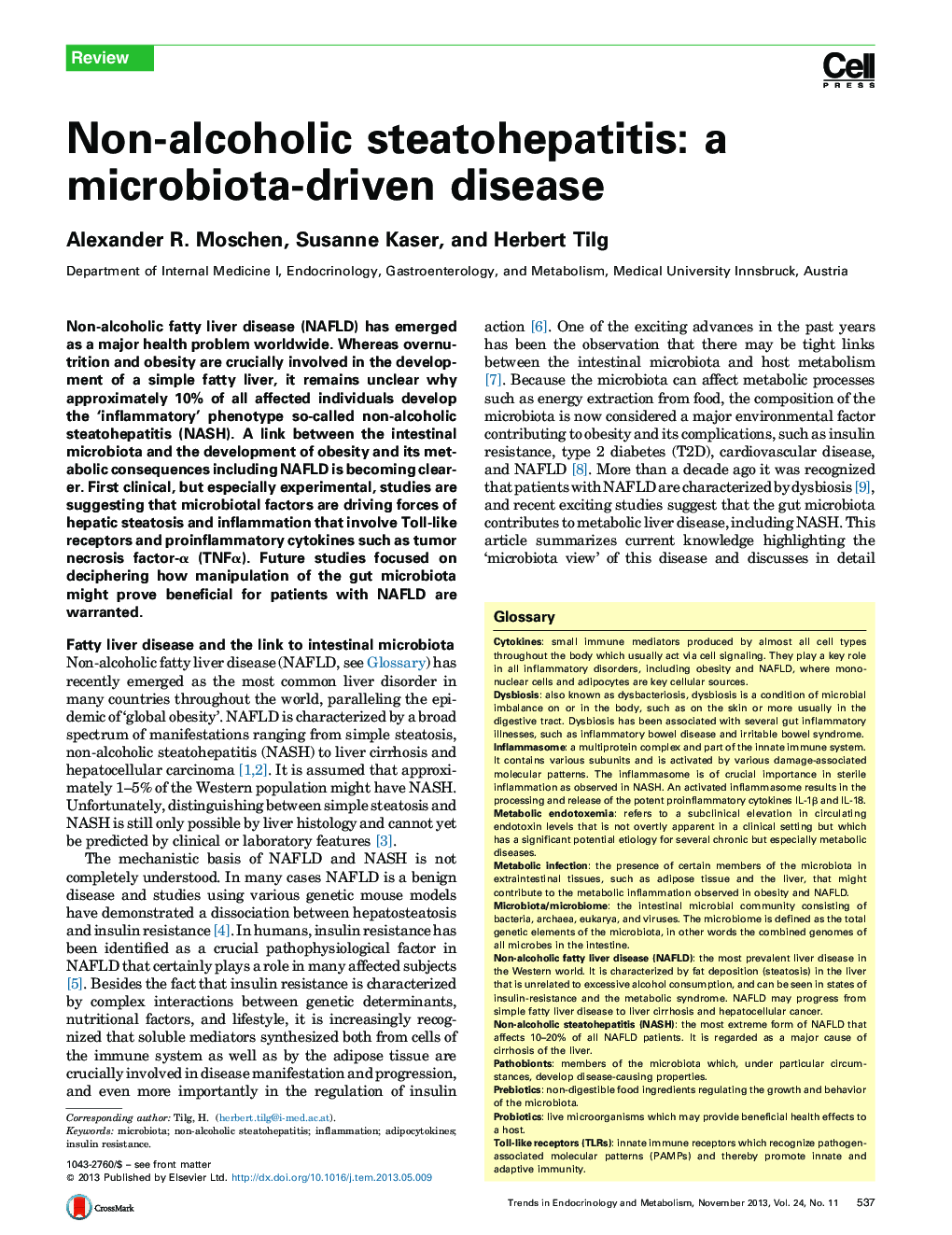| Article ID | Journal | Published Year | Pages | File Type |
|---|---|---|---|---|
| 2810539 | Trends in Endocrinology & Metabolism | 2013 | 9 Pages |
•NAFLD is characterized by dysbiosis.•The intestinal microbiota contributes to NAFLD development.•Innate immunity plays a major role in NAFLD.•Proinflammatory cytokines are the driving forces for NASH.
Non-alcoholic fatty liver disease (NAFLD) has emerged as a major health problem worldwide. Whereas overnutrition and obesity are crucially involved in the development of a simple fatty liver, it remains unclear why approximately 10% of all affected individuals develop the ‘inflammatory’ phenotype so-called non-alcoholic steatohepatitis (NASH). A link between the intestinal microbiota and the development of obesity and its metabolic consequences including NAFLD is becoming clearer. First clinical, but especially experimental, studies are suggesting that microbiotal factors are driving forces of hepatic steatosis and inflammation that involve Toll-like receptors and proinflammatory cytokines such as tumor necrosis factor-α (TNFα). Future studies focused on deciphering how manipulation of the gut microbiota might prove beneficial for patients with NAFLD are warranted.
